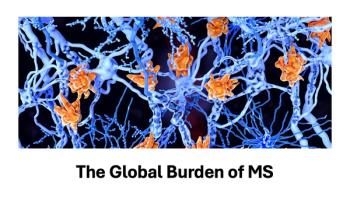
Proposed Medicare Part B rule would cut payments for some drugs
New analysis finds proposed Medicare payment changes for physician-administered drugs would reduce reimbursement for those that cost more than $480 per day in 2016. Seven of the 10 drugs that constitute the largest reduction in reimbursement are used to treat cancer.
Medicare Part B covers prescription drugs that are administered in a physician’s office or hospital outpatient department, such as cancer drugs, injectables such as antibiotics, or eye care treatments. Drugs paid under Medicare Part B generally fall into three categories:
• Drugs furnished incident to a physician’s service in the office or hospital outpatient settings
• Drugs administered via a covered item of durable medical equipment, and
• Other categories of drugs explicitly identified in the law.
According to the analysis by Avalere, as a result, specialties that use higher-cost drugs, including ophthalmologists, oncologists, and rheumatologists, would experience a reduction in payments; though, many of the drugs do not have lower cost alternatives. Seven of the 10 drugs that constitute the largest reduction in reimbursement are used to treat cancer.
The rule seeks to eliminate financial incentives for providers to prescribe more expensive drugs. If finalized, the first phase of the rule would change Medicare payments for about half of providers from 106% of the average sales price (ASP) of the drug to 102.5% of the ASP plus a flat fee of $16.80 per drug, per day. Consistent with current law, payments to physicians would be further reduced by 2% as a result of budget sequestration. The payment changes are proposed to begin in the fall of 2016 and would continue for five years while CMS evaluates the impact of the model.
The proposed Medicare Part B Model would test new ways to support physicians and other clinicians as they choose the drug that is right for their patients, according to CMS, and that it is designed to test different physician and patient incentives to do two things: drive the prescribing of the most effective drugs, and test new payment approaches to reward positive patient outcomes.
“Proposed Part B payment changes under phase I of the demonstration would result in significant changes in payments to providers,” says Caroline Pearson, Avalere senior vice president. “Hospitals, ophthalmologists, oncologists, and rheumatologists would all experience lower Medicare payments as a result of the change. These providers tend to use higher cost drugs to treat their patients, and in many cases no lower cost therapeutic alternatives are available. Additionally, cancer drugs are among the products most impacted by the payment change, since they will experience the biggest reduction in total payments.”
To the extent that this demonstration changes prescribing patterns in Medicare, those changes are likely to spillover into other insurance markets, according to Pearson.
“So, if the demonstration results in more prescribing of lower cost drugs, then private plans could also benefit,” she says.
As private plans explore new models to pay for drugs and encourage value-based payments, they should look to the Medicare demonstration for lessons learned, Pearson advises.
“If the demonstration is effective, other payers may seek to replicate CMS’ approach,” she says. “We anticipate a final rule on this topic sometime this summer. There has been broad backlash to the proposal from providers, drug manufacturers, and some patient groups. It is unknown whether CMS will finalize the proposal as currently structured.”
Avalere used the calendar year 2014 Medicare Standard Analytic Files (SAF) 5% sample. Researchers included claims for eligible Part B drugs as outlined in CMS’ proposed rule, excluding claims for infused DME drugs and exempt providers. Avalere did not assume changes in drug utilization or prescribing patterns as a result of the payment changes. Impact was assessed across all geographies and did not replicate Medicare’s stratified, randomized assignment of providers across primary care service areas. Findings include the impact of sequestration, both on current Medicare payments (ASP+6%) and on payments that would occur under the proposed rule (ASP+2.5% plus $16.80).
Newsletter
Get the latest industry news, event updates, and more from Managed healthcare Executive.






















































